Introduction to Sedum Pronunciation
Welcome garden enthusiasts! If you’ve ever scratched your head wondering about the correct way to articulate the name of those lush, hardy plants populating your green space, you’re in good company. It’s about time we dig into the nitty-gritty of how to pronounce sedum, an essential skill for anyone passionate about their vegetative vernacular.
The sedum family, a diverse group of succulents, strides boldly across gardens and rocky ledges worldwide. From the rolling English countryside to the heart of your backyard oasis, these fascinating plants have made their mark. But let’s face it, how many times have you overheard a fellow gardener mentioning “SEE-dum” or is it “SED-um”, or perhaps, “sed-UHM”? This botanical tongue-twister indeed sparks lively debates in gardening circles.
Embark on the journey of mastering the pronunciation of sedum and impress your peers. And for those who are more visually inclined, here’s a helpful to get you started. It’s a sneak peek into the world of sedum elocution, perfect for your next tea break. Gather around the garden bench, and let’s transform mispronunciations into a thing of the past.
Imagine chatting with friends about the carpet of sedums in your garden – knowing just how to say it adds gravitas to your green-thumbed reputation. Recall that moment when you discovered the charming patch of ‘Autumn Joy’ sedums, confidently sharing their proper name while basking in the collective admiration of your plant-loving comrades. That’s the spirit we aim to cultivate!
Here’s a pro tip: if you’re eager to broaden your gardening prowess, explore strategies for lush sedum growth to ensure your succulent darlings not only sound beautiful but truly thrive. Now, go ahead, pronounce it like you mean it – your garden and your audience await!
Mastering Sedum Elocution: The Art of Garden Plant Pronunciation
Welcome to the phonetic garden, where the ‘Sedum’ stands tall and the question “How do I say it right?” blooms around every leafy corner. It’s time to roll up our sleeves and dig into the syllabic soil of this horticultural term so that you too can chatter away about your verdant pals with confidence.
The Phonetic Breakdown of ‘Sedum’
Let’s break it down, shall we? The word ‘Sedum’ is not as thorny as it might seem. Think of it as a charming little two-syllable plant, where the first syllable is a bright and open ‘see’ and the second syllable is the soft and short ‘dum’. Like ‘see-dum’. Simple, isn’t it? No need for a green thumb to pronounce this right!
Imagine strolling down a garden path, turning to your friend, and remarking on the “exquisite ‘see-dum’ bordering the walkway.” You’ve not only impressed with your botanical knowledge but also nailed the pronunciation—talk about a double bloom!
Now, if you want to hear this melodious name in action, you can explore an array of pronunciations from around the world at this handy pronunciation guide. It’s like treating your ears to an international garden of ‘Sedum’ sounds!
For those looking to cultivate their understanding further, there’s plenty of guidance on succulent garden care. Dive in to discover how you can turn your green space into a sanctuary for the eye-catching ‘Sedum’ and friends.
While we’ve unearthed the correct way to say ‘Sedum’, do you ever wonder about this word’s roots? Originating from the Latin ‘sedeo’, meaning ‘to sit’, it perfectly paints a picture of these low-growing, ground-covering beauties that seem to sit snugly over rocks and soil. It’s a botanical etymology lesson that neatly ties back to how these plants elegantly occupy their garden spaces.
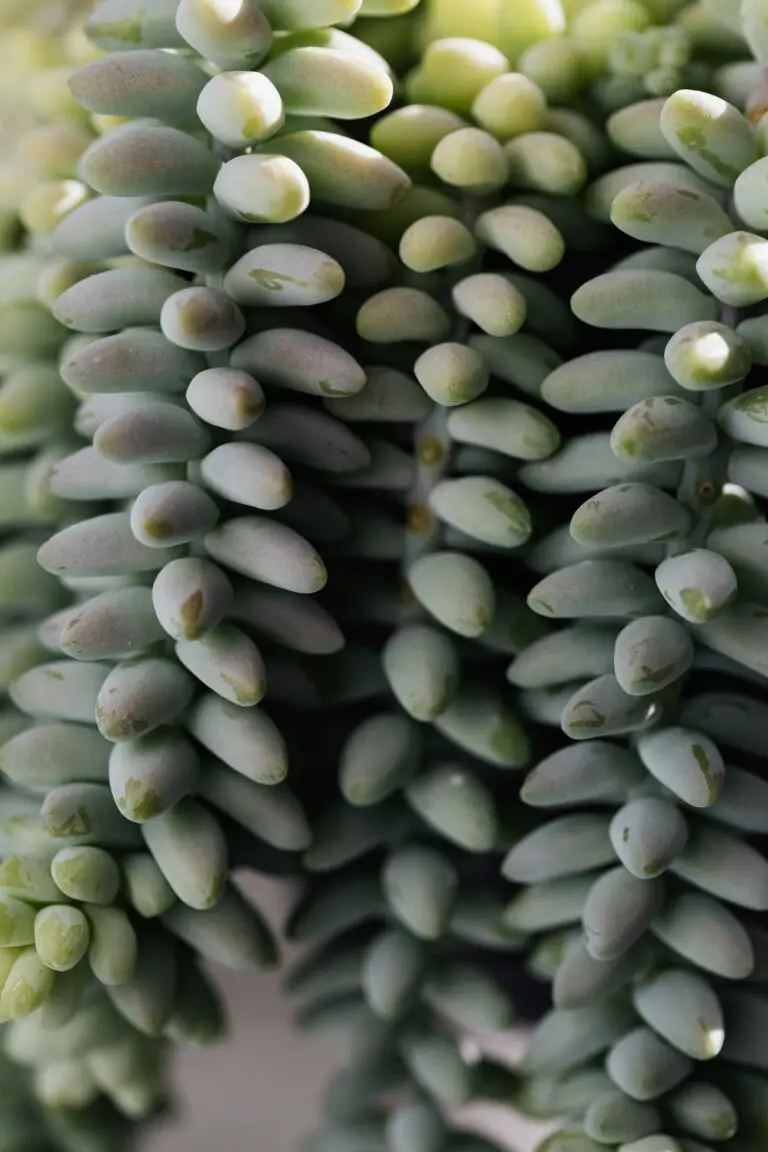
So, there you have it—a phonetic journey through the land of ‘Sedum’. Next time you’re amidst garden enthusiasts or simply enjoying your own slice of planted paradise, let the word roll off your tongue with ease. ‘Sedum’—a term as lovely to say as the plant itself is to gaze upon.
Mastering Sedum Elocution: The Art of Garden Plant Pronunciation
Audio and Visual Aids for Pronunciation
Have you ever found yourself gingerly pronouncing the word “Sedum” at your local nursery, hoping you’re saying it correctly? Or perhaps, uttering it under your breath as you page through a gardening book? Fear not, fellow green thumbs! Mastering the pronunciation of this succulent genus is as simple as tapping into the rich resources available at your fingertips.
Let’s break it down with some real-life aids. Imagine you’re strolling through your serene garden, smartphone in hand, ready to conquer the name that’s tripped up many aspiring gardeners. The first tool in our arsenal is the power of audio clips from botanical databases. A quick search online, and you’re met with the crystal-clear pronunciation, spoken by expert botanists. Repeat after me: “SEE-dum.” It’s music to your ears and a melody for your garden serenity.
But maybe you’re a visual learner, someone who connects words with images and actions. That’s where video tutorials by gardening experts step into the limelight. Watching a seasoned gardener tenderly discuss the needs of their Sedum collection while pronouncing the name with ease can instill confidence. It’s like having your personal gardening mentor at the touch of a play button. And speaking of visuals, feast your eyes on this image that encapsulates the beauty of these versatile plants.
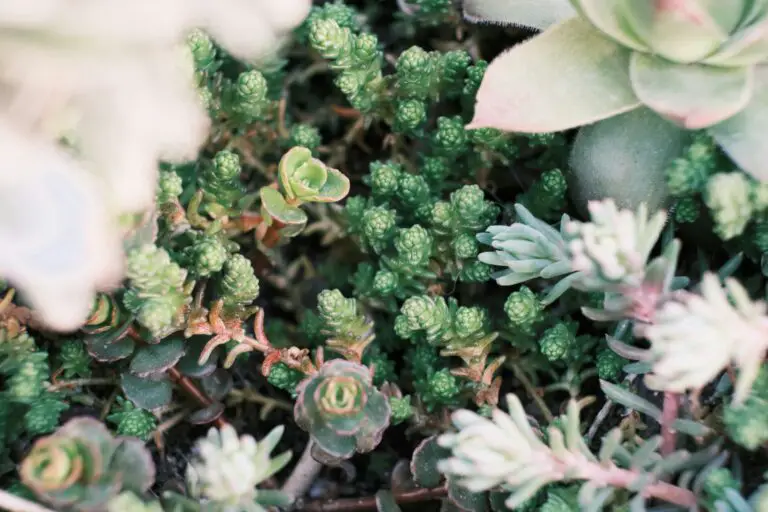
Now, armed with these pronunciation tools, you’re no longer the person awkwardly mumbling at the garden center. You’re the one correcting others with a gentle smile as you discuss the diverse world of Sedums. For more garden insights, take a peek at this article that showcases where to plant Sedum for the most vibrant and lush gardens. Who knew that conquering the pronunciation of Sedum could be the gateway to not only sounding like a horticultural connoisseur but also to enhancing your garden’s aesthetics?
In your quest for pronunciation perfection, remember that practice makes perfect. Replay those audio guides as you deadhead your Sedums or, better yet, while repotting these resilient beauties. Learning in context is always a plus. Before you know it, you’ll be the one creating tutorials, adding to the wealth of knowledge for future Sedum enthusiasts.
Common Mispronunciations of Sedum
If you’re a plant lover or a bit of a tongue-twister enthusiast, you might have struggled with the proper enunciation of ‘sedum’. This lovely genus of flowering plants brings a splash of life to any garden, but often, the pronunciation of its name gets a bit… wilted. Let’s dig into the common mispronunciations that can make any horticulturist’s petals curl.
First up: it’s not ‘SEE-doom’. The ‘e’ in sedum rhymes with the ‘e’ in ‘led’ not with the ‘ee’ in ‘seed’. It’s a subtle but vital difference that keeps you from sounding like you’re talking about a hazardous situation rather than a horticultural specimen. Remember, it’s SED-um, with a short and perky ‘e’ like the sprout of a new leaf.
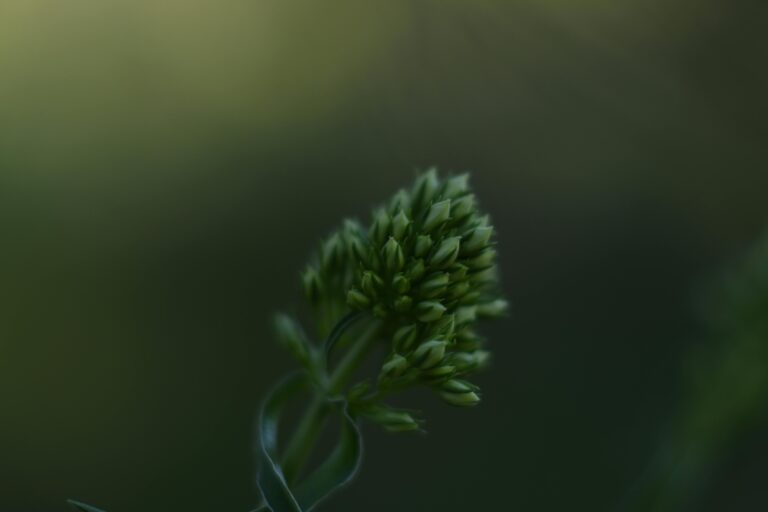
Another faux pas is putting too much emphasis on the second syllable, making it sound like a decree: ‘se-DUM’. The key here is to keep it light and breezy – the emphasis subtly lands on the first syllable, much like a soft step onto a lush lawn. Think ‘SEdum’, not ‘seDUM’.
Then there’s the tricky ‘d’. It’s not ‘sedOOM’ as if the plant were a looming skyscraper. It’s ‘sedUM’, with a ‘d’ as clear as the day you decided to add this botanical beauty to your green haven. Make sure that ‘d’ taps lightly behind your teeth; it shouldn’t take off like a rocket.
Remember, like with any language, confidence is key. Tripping over ‘sedum’ in a conversation is akin to planting a cactus in a swamp – sure, it can happen, but it’s not quite right. Practice with patience, and soon you’ll be saying it perfectly, as naturally as a bee finds its way to a bloom.
Mastering Sedum Elocution: The Art of Garden Plant Pronunciation
Welcome to the lush and verdant world of sedum, a plant family as diverse in species as it is in pronunciation. Whether you’re an aspiring green thumb or a seasoned horticulturist, proper elocution of these succulent names can be a delightful addition to your gardening lexicon. Let’s unearth the secrets to pronouncing these botanical beauties correctly.
Sedum Varieties and Pronunciation Nuances
Did you know that sedum, commonly known as stonecrop, has over 400 species with a kaleidoscope of shapes, sizes, and colors? This rich variety may lead to quite the conundrum when it comes to saying their names aloud. For instance, ‘Sedum spectabile’, known for its showy flowers, might roll off the tongue differently than the ‘Sedum rupestre’, a robust, evergreen perennial.
Imagine you’re walking through a tranquil garden, and you come across the stunning ‘Sedum spathulifolium’. Would you know how to pronounce this tongue-twisting title with confidence? Or what about the ‘Sedum telephium’, beloved by butterflies for its nectar-rich blooms? Each name has its unique twists and turns, challenging even the most experienced gardeners.
Consider the ‘Sedum acre’, a versatile groundcover with vibrant, yellow flowers. It’s not uncommon to hear it pronounced as “SEE-dum AY-kree,” but let’s fine-tune our pronunciation for a more authentic touch. The ‘Sedum morganianum’, or the charming ‘burro’s tail’, earns its name from its cascading, tail-like appearance. Let’s ensure we pay homage to this lovely plant by addressing it correctly.
Now, let’s take a virtual stroll through the sedum family. Here’s an insightful video that sheds light on proper sedum care which can deepen our appreciation for these succulents, including how their names might be brought up in everyday gardening conversations.
Mastering the nuances of sedum pronunciation is not just about linguistic accuracy; it’s about connecting more deeply with the plants you nurture. Next time you brush past the delicate leaves of ‘Sedum dasyphyllum’ or admire the height of ‘Sedum reflexum’, take a moment to consider their stories, etymology, and the right way to say their esteemed names. Whether you’re instructing a friend on caring for their ‘Sedum album’ or discussing your garden’s latest addition, knowing how to articulate these names can enrich your gardening journey and spark delightful conversations.
Why Pronunciation Matters in the Plant World
Imagine you’re wandering through your local nursery, eyes alight with the vibrant colors of flora all around. You spot a succulent that captures your heart—it’s a sedum, you’ve seen it in a magazine once. Excited, you turn to the nursery attendant nearby and ask if they can tell you more about the “see-dum” you’re pointing at. Moments of confusion follow before there’s an ‘aha!’ and they correct you gently, “Oh! You mean ‘sed-uhm’!” This tiny twist in vowels might seem trivial, but in the plant world, it can make all the difference.
Precise pronunciation in horticulture isn’t just about being pedantic—it’s about connecting with other enthusiasts, professionals, and hobbyists in a way that’s clear and meaningful. Say you’re at a conference for gardeners and you’re swapping care tips for various plants. If you pronounce sedum as “seedy-um”, you might see a few raised eyebrows—which is not the sort of fertilizing conversation you were hoping for!
Think about it; every plant has its own name, a unique identifier that’s been carefully curated over centuries. Botanists didn’t sit with their quills and ink by candlelight meticulously documenting plant species so that we could play fast and loose with pronunciation. They did it to ensure that someone in Seattle could talk about a sedum and be understood by someone in Sydney. When we pronounce these names correctly, we’re honoring a legacy of scientific diligence and fostering an understanding that transcends geographic and cultural boundaries.
Then, there’s the butterfly effect in the greenhouse—mispronunciations can lead to misconceptions. Take, for instance, a beginner gardener who hears about the wonders of a “sedum” plant for the first time through word-of-mouth, but what they hear is “see-dum”. They go home, type it into their search engine, and find themselves in a botanical blunderland with no sedum in sight. Correct pronunciation from the get-go could have saved them from this wild garden goose chase.
If you’re feeling uneasy about your plant pronunciation, worry not! The internet is abloom with resources to help you become a linguistic laureate of the leaves. Let me show you a handy video that might just help you become the sedum speaker you aspire to be:
Engaging with the plant world is a symphony of syllables and sounds that make the experience richer. The next time you speak about sedum or any other garden gem, remember that the right pronunciation can be your passport to meaningful conversations, deeper connections, and a shared understanding in this green and blossoming world.
Interactive Pronunciation Practice
Hey there, green thumbs and garden enthusiasts! We’re about to dive into something a little different from the usual soil-and-seed chat. It’s time to marry your love for horticulture with some linguistics. Ever found yourself wondering if you’re saying “sedum” correctly while conversing with fellow plant lovers? Trust me, you’re not alone in the quest to sound like an eloquent botanist.
We understand the struggle, and that’s why we’ve curated a series of playful, interactive experiences to get your tongue around the tricky botanical terms. Imagine this: you’re at a garden party, and everyone’s discussing their latest plant acquisitions. You chime in with a confident “I’ve just added a splendid sedum spectabile to my rockery,” and…cue the applause for your impeccable pronunciation!
How do we get you there? Start with online quizzes that are as fun as they are enlightening. It’s a judgement-free zone where faux pas become teaching moments. Or perhaps, join one of our pronunciation workshops tailor-made for gardeners. There, you can practice with peers, share laughs over mispronunciations, and gently correct each other until ‘sedum’ rolls off the tongue, as naturally as asking for a cup of tea.
We’re all about creating a supportive community where learning is a shared journey. So, grab your gardening gloves and let’s dig into the art of speaking ‘plant.’ And remember, it’s not just about correctness; it’s the confidence and the camaraderie that bloom along the way!
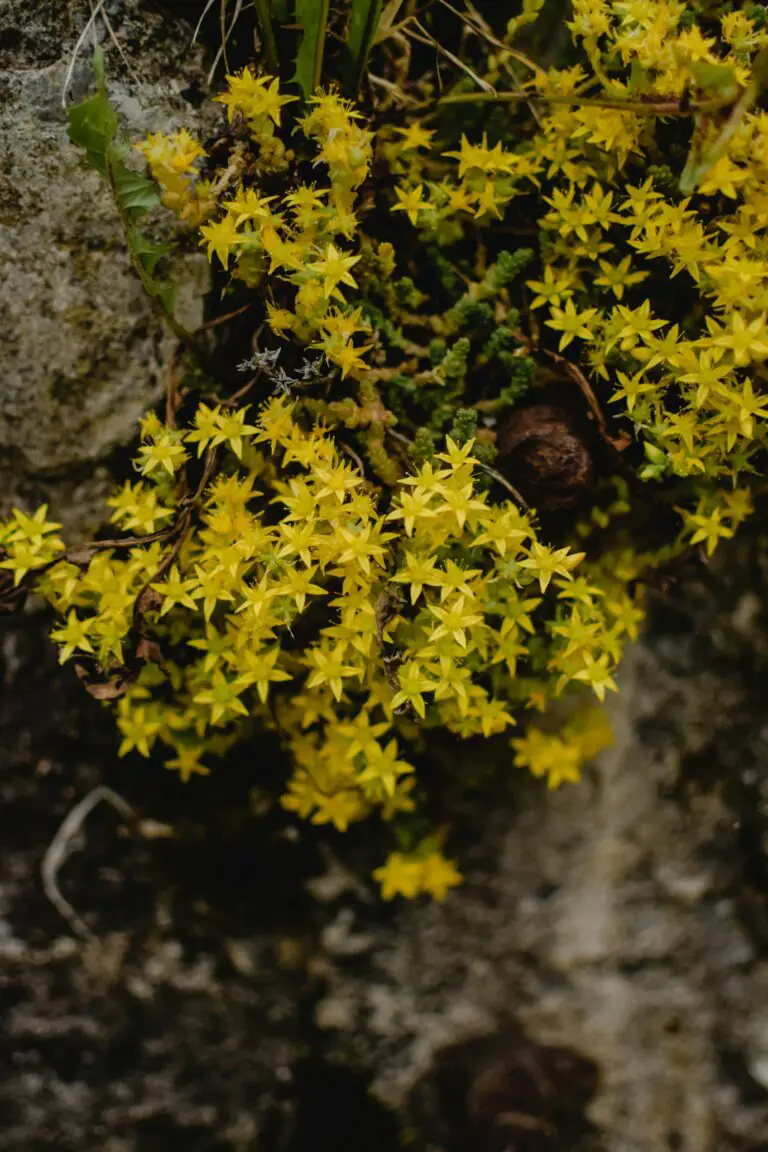
As your eloquence grows, so will your garden. And while you’re perfecting the pronunciation of ‘sedum,’ you might just discover the perfect spot for a new specimen. The best part? You’ll be ready to share its story, complete with a name that you can articulate with botanical flair. Let’s turn that linguistic challenge into a beloved part of your gardening adventure!
Conclusion: Confidently Pronouncing Sedum
As we culminate our horticultural journey, it’s clear that saying ‘sedum’ with assurance does more than just impress your gardening buddies; it cultivates a deeper connection with your verdant friends. It’s like calling someone by their name; it’s a sign of respect. Picture yourself walking through your local nursery or chatting with fellow enthusiasts—knowing how to articulate ‘sedum’ correctly is your secret hand-garden-glove to being part of the club.
Let’s not forget the practical side of things. Imagine researching your next succulent addition or discussing care tips with others; pronouncing ‘sedum’ accurately will ensure you’re on the same page. It’s a small but mighty detail that elevates your gardening game from amateur to aficionado. So, say it with me: ‘SEE-dum,’ a simple yet powerful word that unlocks the full potential of your green-thumb identity.
And don’t just take my word for it. Watch this handy video and hear for yourself the correct pronunciation that will have you mingling with the masters in no time. Let it be the melody in your garden symphony, as you harmoniously blend scientific know-how with the sophisticated art of conversation.
In the luscious world of sedums, where every petal, leaf, and stem is a note in nature’s opus, mastering the pronunciation is akin to a conductor leading an orchestra—a small gesture with a significant impact. It’s the finale of your floral education, the bow after the performance, the knowing nod among gardeners. So go ahead, say it loud and proud: ‘sedum.’ With every encounter, you’re not only acknowledging a botanical beauty but also resonating with a community of passionate plant lovers.
Frequently Asked Questions
When it comes to the sophisticated world of gardening, knowing your plants is key, and that includes articulating their names with finesse. Sedum, a robust and versatile genus with fleshy leaves, bursts onto the scene in a myriad of forms and hues. But how does one go about pronouncing ‘sedum’ correctly? Let’s dig into the frequently posed questions that garden enthusiasts and Latin language aficionados alike often encounter.
Do You Say “SEE-dum” or “SEH-dum”?
There’s a common trepidation that sweeps over a gardener’s face when they reach the s’s in the plant directory. Sedum, often starring in rock gardens and green roofs alike, has prompted many to pause and ponder its pronunciation. While some passionately pronounce it “SEE-dum,” accentuating the ‘e’ akin to the word ‘seed’, others confidently convey it as “SEH-dum,” giving it a more brisk and short e sound. The reality is, both pronunciations are blooming in gardens across English-speaking regions, so feel free to choose the one that naturally roots itself in your dialect.
Botanical Latin Pronunciation of Sedum
For the purists out there who aim to replicate the classical tones of botanical Latin, a path less trodden, ‘Sedum’ sheds its English cloak. Botanical Latin, often the lingua franca among plant scholars, embraces each vowel with clear and distinct sounds. Picture yourself walking through the ancient gardens of Rome, and you’d likely hear ‘Sedum’ pronounced with each vowel enunciated separately: “Se-dum” (‘e’ as in ‘bet’, ‘u’ as in ‘put’). It’s a pronunciation that’s more balanced, much like the symmetrical shape of many sedum flowers.
Understanding the subtleties of regional pronunciations isn’t just an exercise in correctness; it’s a celebration of diversity. Whether in an English cottage garden or studying the pages of “De Materia Medica”, the ancient Greek pharmacopeia, sedum’s diverse range of pronunciation is as rich as its species variety.
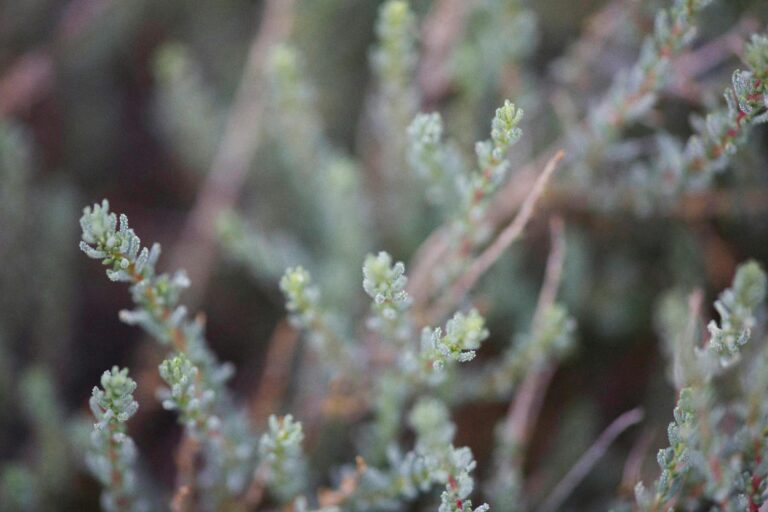
Why Pronunciation Matters
In embracing the global tapestry of gardening cultures, we recognize that pronouncing ‘sedum’ carries more weight than one might expect. It’s not solely about the correct utterance, but about the shared language of gardeners around the world. Discussing ‘sedum’ and being understood in context, whether you’re in the bustling flower markets of Paris or the tranquil backyards of Kyoto, fosters a sense of community. Pronunciation becomes the bridge between different horticultural traditions and practices. So, the next time ‘sedum’ comes up in conversation, remember it’s more than a name—it’s a connection.
Ultimately, whether it’s a ‘SEE-dum’ that rolls off your tongue or a ‘SEH-dum’ that you prefer, the beauty of this resilient genus remains constant. It’s the humble sedum, diverse in form and dialect, that unites plant lovers under the green canopy of shared knowledge and appreciation. Now, go forth and articulate your way through the sedum collection with confidence, contributing your own voice to the chorus of garden dialogue.


